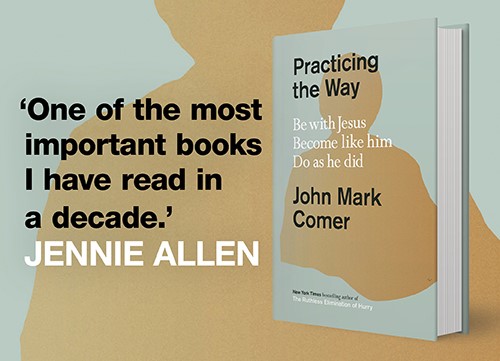We use cookies to make your experience better. To comply with the new e-Privacy directive, we need to ask for your consent to set the cookies. Learn more.

| Publication Date: 21 Nov 2013 |
|---|
| Publisher: SPCK Publishing |
| Page Count: 144 |
| Author: David Bryan |
| ISBN-13: 9780281071081, 9780281071098 |
Jesus - His Home, His Journey, His Challenge
Summary of Jesus - His Home, His Journey, His Challenge
The above work is a short one, but it is not intended to be a quick read. From the very beginning it is made clear that the author has a thoughtful approach and wishes to evoke a similar thoughtfulness in the readers’ minds. I say ‘readers’ because this book is designed to be used for reflection by both individuals and groups, providing questions to consider for yourself or to discuss with others. A variety of tools are employed, not just prose; readers are also introduced to poetry as well as encouraged to seek out particular pieces of art and film.
Essentially, David Bryan explores the geographical, cultural and religious background of where Jesus grew up, specifically the area of Nazareth, and from that foundation imagines what Jesus’ journeys towards Jerusalem might have been like: How would one from the countryside react to the scale of the cities? What tensions would one experience moving through an occupied land? Etc.
Following this unifying thread the book is densely packed with ideas and moves through a variety of themes. The first chapter sets the feel of the book while setting the scene of Jesus’ adopted home. It outlines such things as what life in 1st Century Nazareth can best be estimated to look like, or what its nearest urban centre would have been like (Sepphoris – a town missing from the gospel accounts). The treatment of these questions is not as deep as a text book might give, but the aim of this book is obviously different. It is here, then, that the questions begin to come from the author to stir thought: What does home mean you? How would this home have influenced Jesus?
Chapters 2 through 4 mainly tackle one particular journey of Jesus, the trip to Jerusalem at age twelve. The potential routes and physical challenges of the journey are described, and particular thought is given to the idea of the borders and boundaries that were crossed during the party’s travels. These topics give rise to questions on such themes as culture shock, discrimination and prejudice, tangling with the power of society at large, and the readers’ own journeys of faith.
The next two chapters form a contrasting and complementing pair. Chapter 5 contains what one might expect from a book about Jesus with a devotional edge in that it focuses on the challenge that Jesus issued outwards through his teaching. In this case Bryan narrows the discussion down to Jesus’ command to love our enemies. Here is a particularly interesting inclusion of the opinions of a variety of commentators from different faiths on these words of Jesus in the gospel of Matthew. The suggestions for discussion/thought here include such things as the practicalities and practical-ness of peaceful resistance.
If chapter 5 focused on Jesus’ challenge given outwards then chapter 6 flips the direction and looks at the challenges the author perceived Jesus to receive from those he met on his travels. Bryan looks at three encounters in which he argues that Jesus can be perceived to be faced with something which challenged him and his thinking. All three are stories of healing but draw in such themes as the barriers illness creates in Jesus’ culture, or the divisions of ethnicity and gender present at the time. Bryan puts forward the case that the experiences were ones of learning for Jesus and as such sources of learning for Jesus’ followers today. However, this chapter is not the clearest in its approach or argument; it is not always clear what the author thinks the challenge was, nor how strong is the basis for his particular interpretation.
The seventh and final chapter moves on to reflect on the story of the woman at the well of John 4 and the state of modern day Sychar (also called Schechem or Nabulus). This provides a platform to encourage the readers to consider inter-faith relations. Israel is a place of faiths and conflicts, now as it was then, but it is not the only place in the world, and nor is it the place in which most of the book’s readers will live, work and interact with others. Bryan wishes to ask his readers to think of their part in finding peace in this world.
All in all the book has much to commend it. It is perhaps a bit too short and could have done with a bit more description and reflection from the author himself to generate responses, but equally it can be said that its simplicity leaves space for the reader to think, and usefully so. As such it will fit the reader who wants something to aid reflection as opposed to simply read through.
David Bryan beings the fruit of up to date scholarly insights about the geographical, political, social and spiritual realities of that world and what it might have been like to inhabit it, it turn informed by his reflections on his own experiences of modern Israel. But this also very much about the Jesus of faith, about the author’s passionate desire to bring his readers a fresh understanding of who Jesus was and is as they seek to follow him, and about the difference Jesus still wants to make through his followers to our world today.











